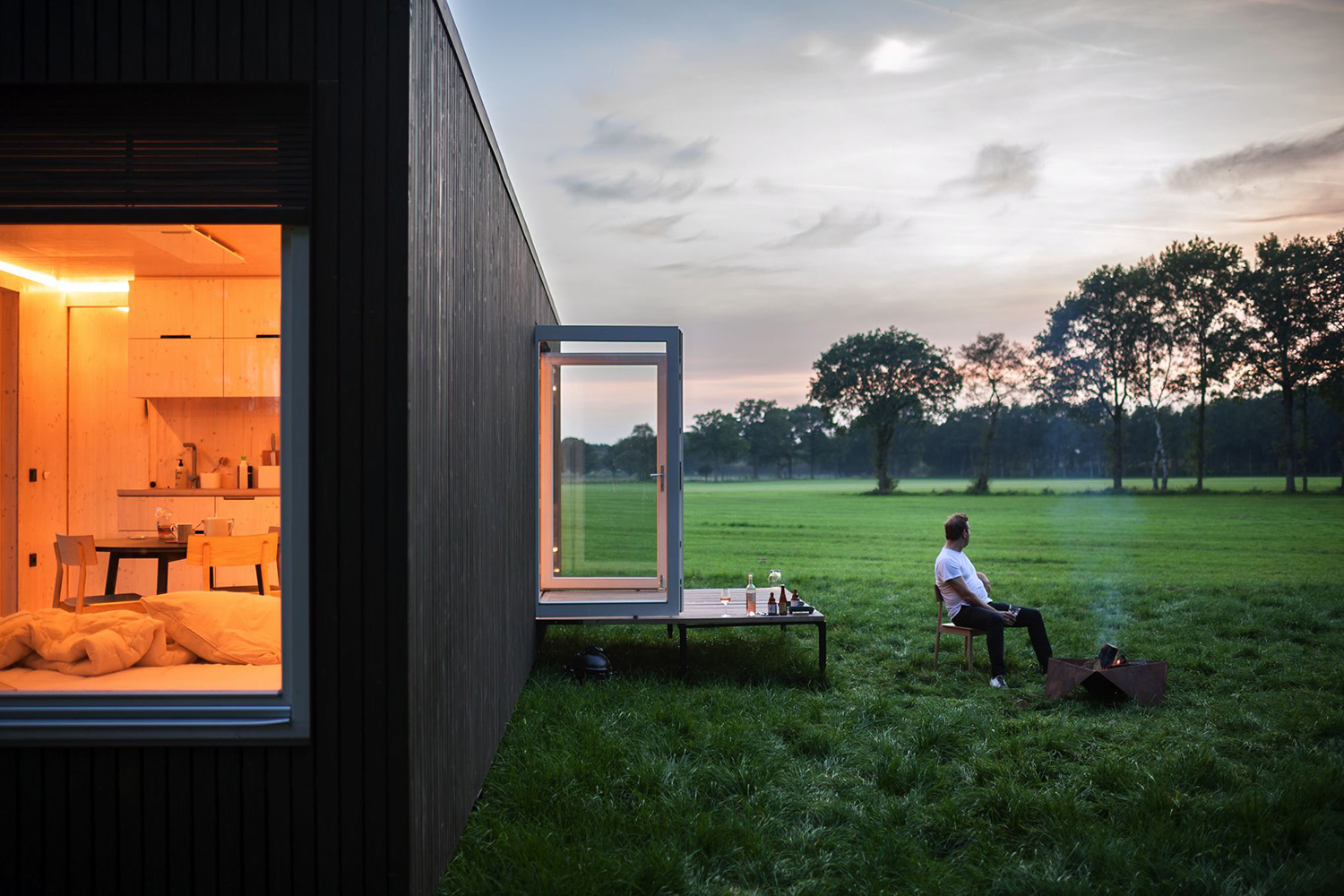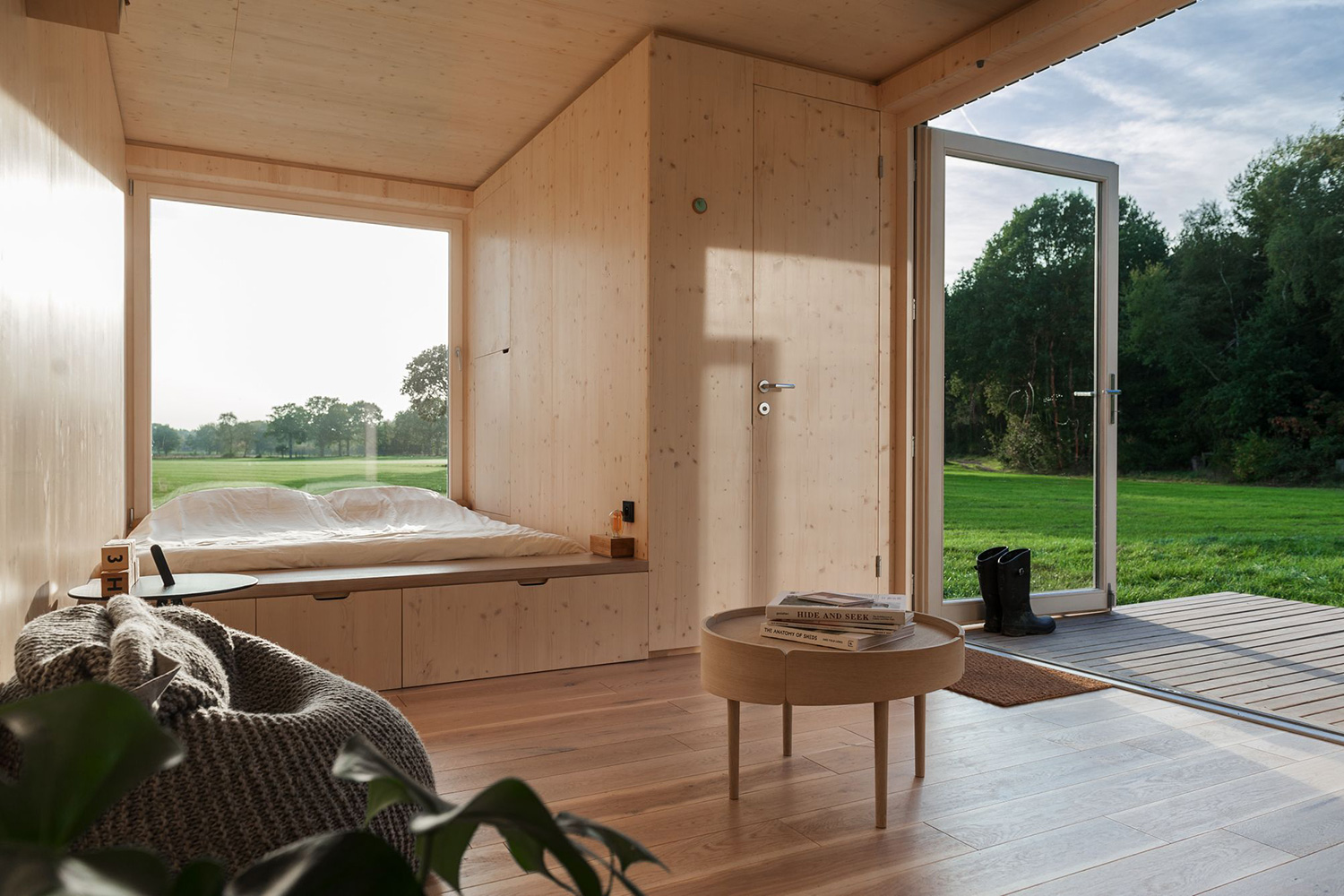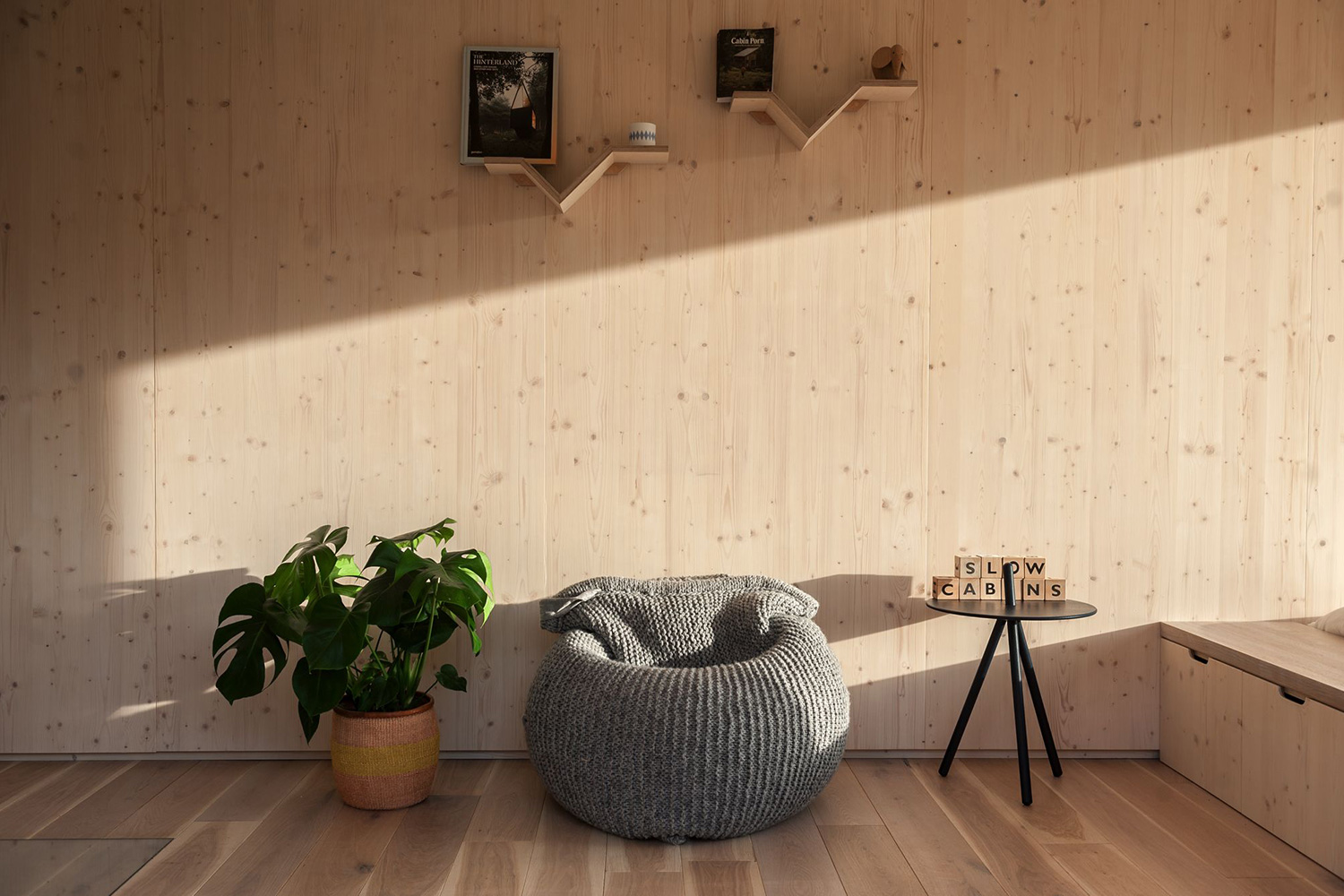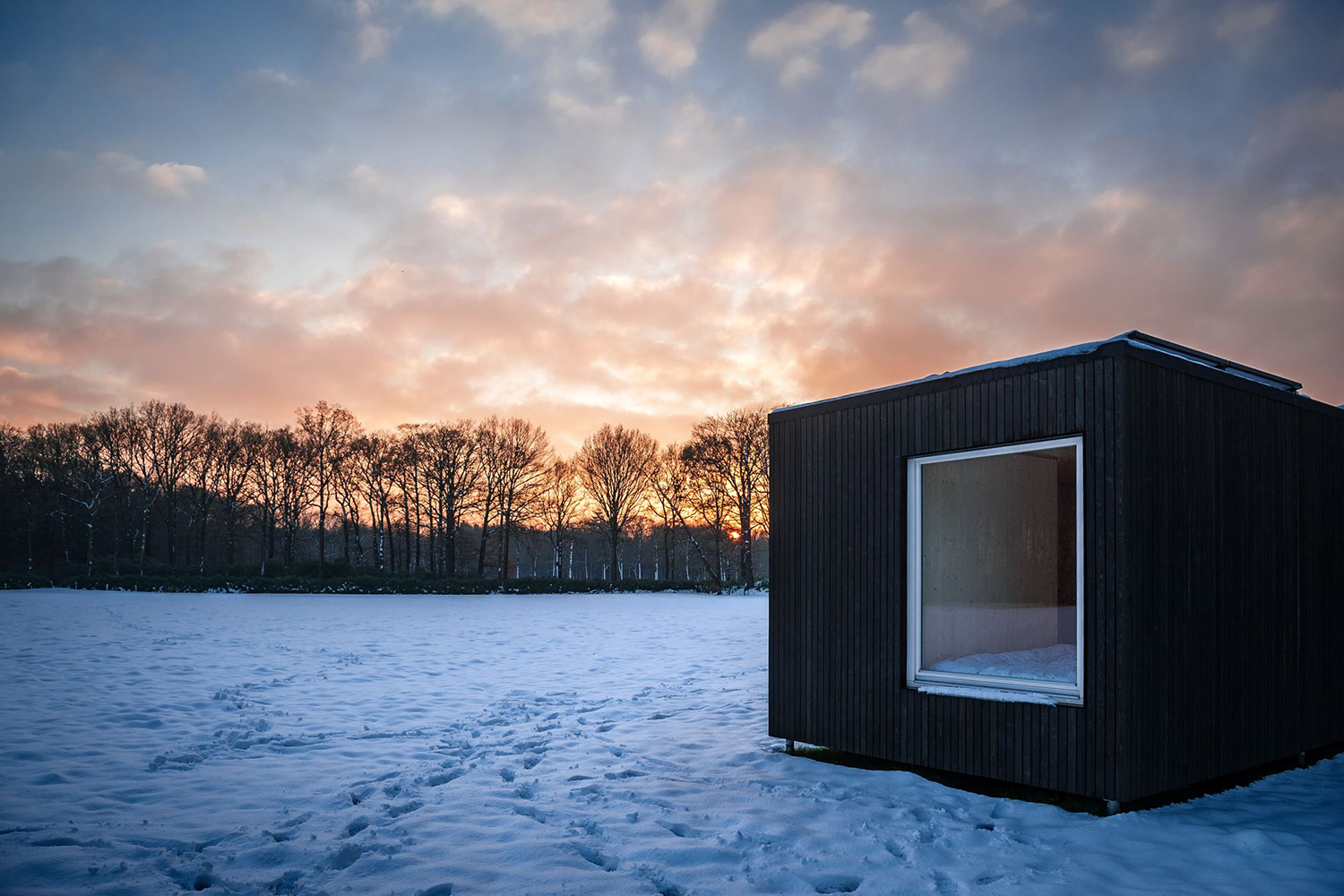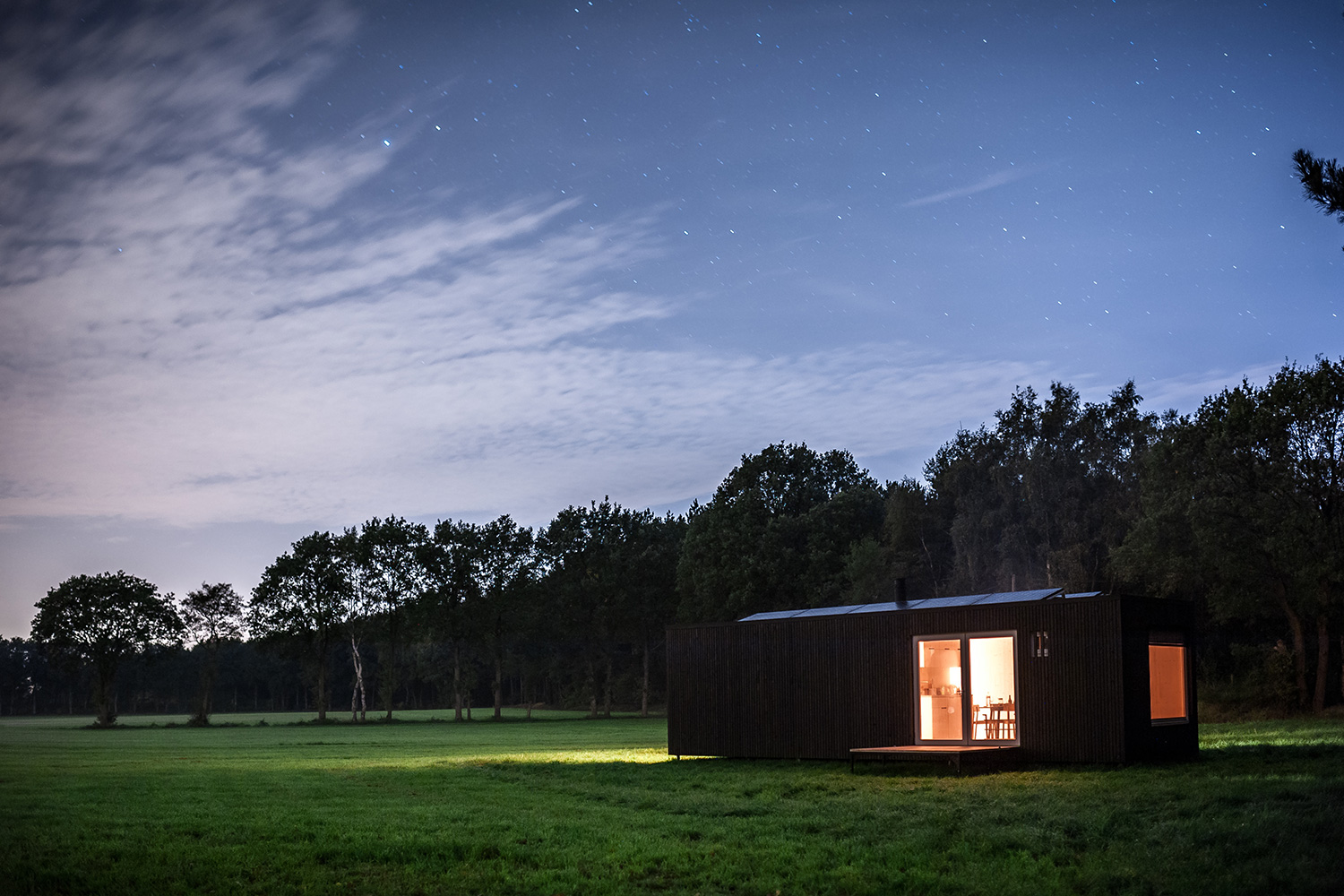These lovely, self-contained “Slow Cabins” in remote Belgium may look like another version of a tiny home, but an entrepreneur is using them for a very different purpose: Isolation and intimacy. In a world that is moving at blinding speed these days, these remote sanctuaries lay waiting in secret locations for guests who won’t even know where they’re going until the last minute. It’s a sustainable, imaginative concept based on the 1950s-era idea of circular business modeling which seeks to reduce, retain and recycle.
Note that these aren’t like Airbnb; the Slow Cabins company builds, owns and maintains each cabin. The cabins themselves are aimed at three general categories of guests: Couples seeking out a romantic getaway, families with children, and entrepreneurs or artists who need a quiet, out-of-the-way place to focus and hone their ideas. What’s missing? The internet and, hopefully, your phone.
“Nature, time, and attention to each other have become the most precious thing in our fast society.”
“Maybe our society needs ‘Slowify’ more than Spotify,”Slow Cabins founder Xavier Leclair wrote on the website. “Nature, time, and attention to each other have become the most precious thing in our fast society.”
As far as its construction and operation, the Slow Cabins are entirely self-sufficient. Electricity is generated by a large batch of solar panels on the roof of each cabin, which is also insulated using natural materials and includes a high-efficiency wood stove to heat up a room quickly. Infrared heating panels can be used as a backup.
Spring water is prepared in advance of each stay, with at least five liters per couple for drinking and brushing teeth. Guests can also cook, wash and shower using filtered rainwater. Because of these limitations, the company notes that a conscientious use of energy and water is necessary. A display within each cabin guides guests’ quest for self-sufficiency, as well as the state of the rainwater level. Lastly, the cabins’ eco-friendly dry toilets don’t require any sewage. Slow Cabins will even take care of breakfast and dinner upon request, with locally sourced food baskets featuring products and meals prepared by local farmers.
Currently, the cabins are limited to Belgium, but the founders have ambitious plans to extend the service into western Europe. They’re currently offered in two basic models. The first model, Time for Two, is a 366-square-foot ARK cabin, which rents from around $215 per night. The second, larger model is a 420-square-foot “church cabin,“ perfect for a family with two or three kids, starting at $225 per night. Those needing stays of three nights or longer, Slow Cabins offers a fairly significant discount for what it calls its “detox promo.”
Guests can book their stay using an automatic booking system but the company won’t tell guests where the cabin is located until at least two weeks before a stay. To make things even more interesting, the landlords don’t identify the exact destination. Guests receive their route description on-route and only discover the exact location of the cabin upon arrival. Surprise!
However, the company doesn’t leave guests completely on their own. Along with the instructions, guests receive a series of tips about the neighborhood in advance. The company is also committed to keeping its guests safe, even with its terms of extreme privacy. Local authorities are made aware of each stay, and each cabin is equipped with a first-aid case and a fire extinguisher.
